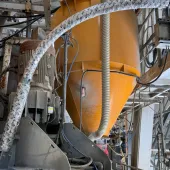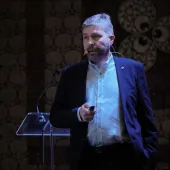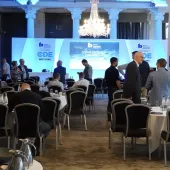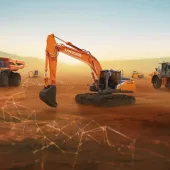The Challenges of Creating the Industrial Internet of Things
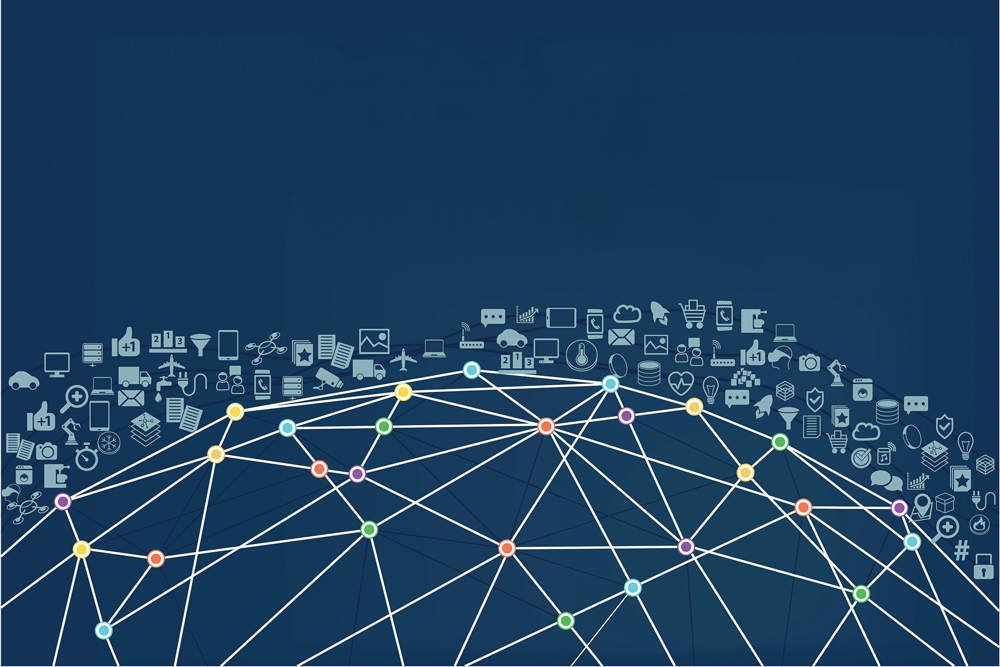
First published in the April 2016 issue of Quarry Management
The promise of connecting everything within an industrial environment, to get complete operational visibility and allow for the best real-time decisions, will transform manufacturing for years to come. The premise for this next industrial evolution is the Industrial Internet of Things (IIoT), says Tony Paine, chief executive officer of Kepware Technologies.
As industry looks to build out the Industrial Internet of Things (IIoT), its biggest challenge will be seamlessly Internet-enabling the ‘Things’ that live at the edge of the network. Industry-wide, this area contains trillions of Things that contain one or many data points that may need to be analysed and combined into information.
The IIoT sets its sights on Internet-enabling all hardware and software components (the ‘Things’) that comprise an automation system. This will allow for smarter automation, where Things can share information with other Things and adapt their behaviour to achieve optimum performance. In addition, personnel responsible for the operations of the system will be able to remotely assess and manipulate all aspects of such systems, without the need for dedicated on-site expertise.
These benefits are contingent upon the resolution of key challenges; most notably the interchange of data between the mechanical, digital and human components of an industrial automation process.
Today, however, there are several cultural and technological changes that are impacting the scale and speed of the creation of the IIoT.
New ‘big data’ software vendors are entering the market, looking to provide products to consolidate data, unify legacy solutions, and bridge the gap between external and internal operations.
In tandem with such software products, hardware technology is becoming lower cost, allowing for the unlocking of previously unavailable data from low-level sensors.
Furthermore, society’s reliance upon Internet technologies permeates all aspects of life, with the next generation of industrial engineers growing up with the assumption that industrial data will be available, rich, easy to use, and everywhere.
And finally, multi-site data connectivity will assist with strategies at the enterprise level, with competitive advantages to be gained by moving beyond traditional organizational boundaries, to use and involve third parties.
As already mentioned, the biggest challenge to building the IIoT will be seamlessly integrating the Things that live at the edge of the network. The edge of the network is the furthest removed from the Information Technology (IT) people have become accustomed to using when Internet connectivity is required.
Challenge 1: Identifying Things within the Internet
In order for Things to be able to communicate with each other, they need to be uniquely identifiable within the Internet. Historically, this has been accomplished through a unique Internet Protocol (IP) address. As industry looks ahead to the trillions of Things that will be connected, focus has been placed on adopting the Ipv6 standard, which defines a 128-bit address capable of uniquely identifying 340 undecillionth (340 x 1,036) addressable itemsems using today’s Ipv4 standard).
This range will more than cover the requirements of IIoT. It will, however, be difficult – if not impossible – to manage this effectively on a global Internet scale. Typically, such tasks have historically been achieved by naming and number authorities, with the aid of network administrators, but this will likely be an impediment as Things become added at an unprecedented rate.
Challenge 2: Discovering Things and the data they possess
Once a Thing can be identified, the next challenge is how other interested parties will discover that it exists and what data it possesses. Of course, a Thing should be able to restrict discovery of some or all of its data, based on security requirements. Balancing ease of discovery with the rigid constraints of security will be fundamental to the success of the IIoT and must be achievable without a PhD in cyber security.
Challenge 3: Managing massive amounts of data
These trillions of Things will produce something much larger than trillions of data points, all of which will need to be collected, analysed and possibly archived. Moving this amount of data over the Internet will consume new levels of bandwidth, which could result in the degradation of service as well as higher costs for Internet carriers, service providers, and, ultimately, end-users. Moreover, archiving this data for future analysis will require massive amounts of data storage and a new generation of scalable analytical applications capable of honing in on individual points of interest in a timely manner.
Challenge 4: Navigating connectivity outages
The Things that make up the IIoT, as well as the communication mediums that link them together, will not be available 100% of the time, resulting in intermittent or even long-term outages. This could severely impact systems where data loss is unacceptable or where variances in the data needs to be known in real time.
Challenge 5: Integrating existing infrastructure into new IIoT strategies
For decades, industrial Things have made data accessible over private site networks, through the implementation of open or proprietary protocols. And in the past, complexities such as security have largely been ignored, in order to achieve optimization and integration between dissimilar industrial systems within a private environment. Given that the typical life cycle for industrial Things exceeds 20 years, there will be an expectation to integrate the existing into new IIoT strategies. Opening these private networks and the data they contain to the Internet will require detailed security assessments to minimize risk of exploitation.
Leveraging the power of cloud computing
In order to alleviate some of these challenges, IIoT strategies will focus on pushing data into a centralized cloud platform. This platform and its corresponding services will be administered by IT experts familiar with the managed world of IP and made available to anyone with the proper credentials and an Internet connection. Leveraging the power of cloud computing and its multitudinous resources will make the required storage and processing power available to handle the zettabytes of data that will be collected, analysed and archived. Furthermore, the overall uptime of these platforms continues to trend upwards as they become more resilient to the increasing demand and expectations of today’s connected world.
Communicating with devices on the edge
The actual source of data pushed into the cloud resides within the industrial Things that live at the edge of the network. The edge bridges the gap between IT and operational technology (OT), where the rich resources available in the cloud are not directly available. OT encompasses industrial networks that have their own nuances and introduce additional challenges.
Connecting disparate communications mediums
Very often, industrial networking technologies do not leverage Ethernet as their physical communications layer. Depending on the environment and the Things that comprise a system, anything from RS232/485 to modems or proprietary wiring may be encountered. Likewise, the data protocols that are exposed over these communication mediums are not likely to be IP derivatives. Consequently, a hotchpotch of industrial networks has been created with no attention paid to the future possibility of being connected to the Internet.
Utilising non-standard methods of identification
Unlike IP addresses in the IT world, many industrial Things have their own addressable schemes for uniquely identifying themselves on the network. These schemes vary by vendor and type, and may not have built-in discovery mechanisms. Innate knowledge by an integration expert is required to interconnect the Things in a way that makes them function as a whole.
Determining a request/response model
Industrial Things have historically followed a request/response model. If a particular Thing is interested in a piece of data contained in another Thing, it will make an appropriate connection, request the piece of data and wait for a response containing the result. Although this pull model is fine for Things living within the same digital boundary of OT, security and scalability requirements will dictate that this model is unacceptable for the outside IT world trying to look inbound. Instead, IIoT prefers a push model, where industrial data flows outbound to a cloud platform.
IIoT edge solution
In order to seamlessly integrate industrial data into the IIoT, a new communications platform is required. This platform requires extensive knowledge of the intricate realm of OT and the state-of-the-art and rapidly changing domain of IT.
Within OT, the platform must understand the various network topologies and data protocols that will be encountered. It must be able to automatically discover and identify industrial Things and the data they contain, and be able to handle the storage of high-frequency updates.
Within IT, the platform must be able to transform the data it collects and push it into the cloud via IIoT standards. Emerging standards include Asynchronous Messaging Queuing Protocol (AMQP), Message Queuing Telemetry Transport (MQTT), Constrained Application Protocol (CoAP), and Data Description Services (DDS). These standards allow for the re-transmission of data in the event it does not reach its destination.
With the lack of computer networking infrastructure in OT, this platform must be embeddable and run within a standalone appliance or an edge-based switch or router where IT and OT converge. Its flexibility will enable industrial data to be sampled cyclically or based on some event or condition and be published to the cloud independently of data collection. Data filtering should be available through basic analytics. Lastly, user setup should be minimal by automating as much configuration as possible.
As industry continues to define the IIoT, the concepts and realization of the optimal embedded IIoT solution will continue to evolve.
For more information on the IIoT or to download the full white paper ‘Industrial Internet of Things and Communications at the Edge’, by Tony Paine, CEO of Kepware Technologies, visit: www.mac-solutions.net


